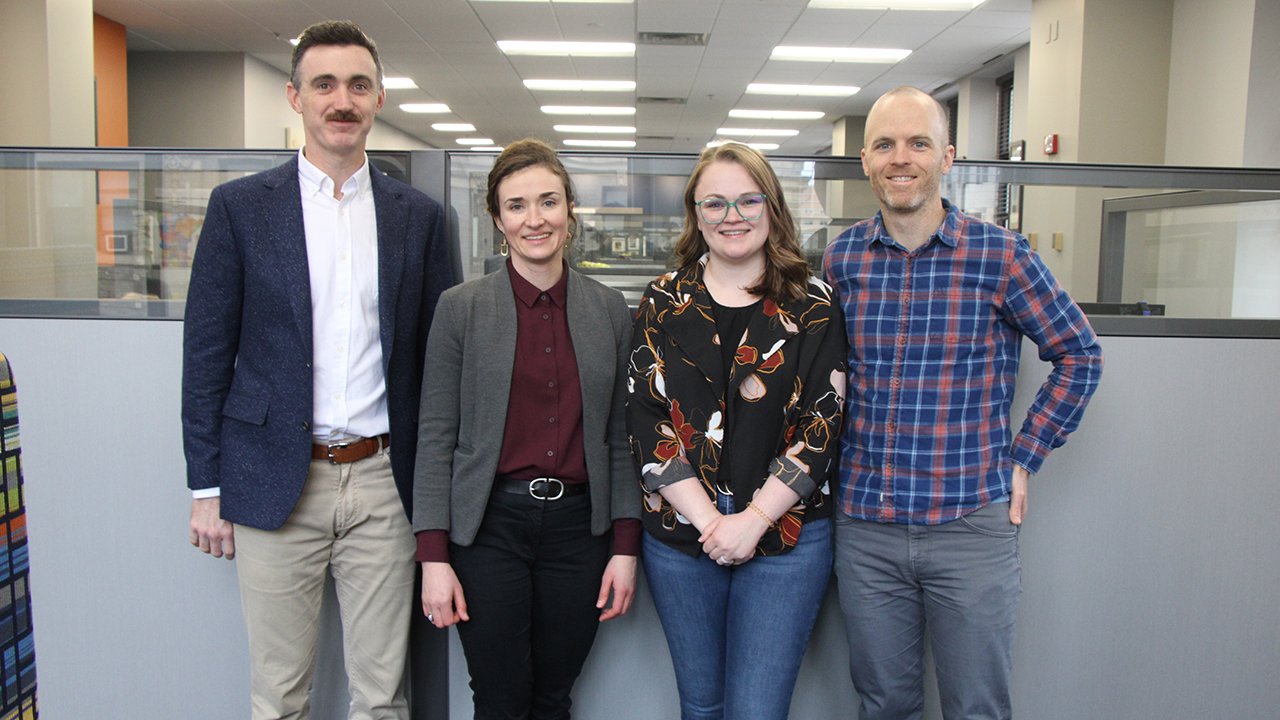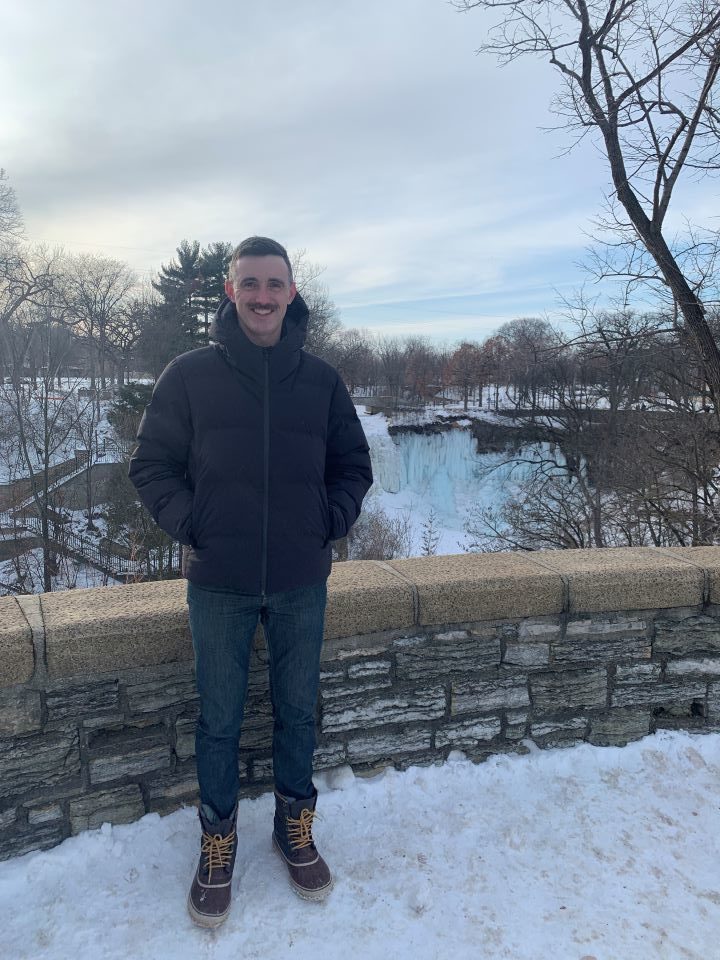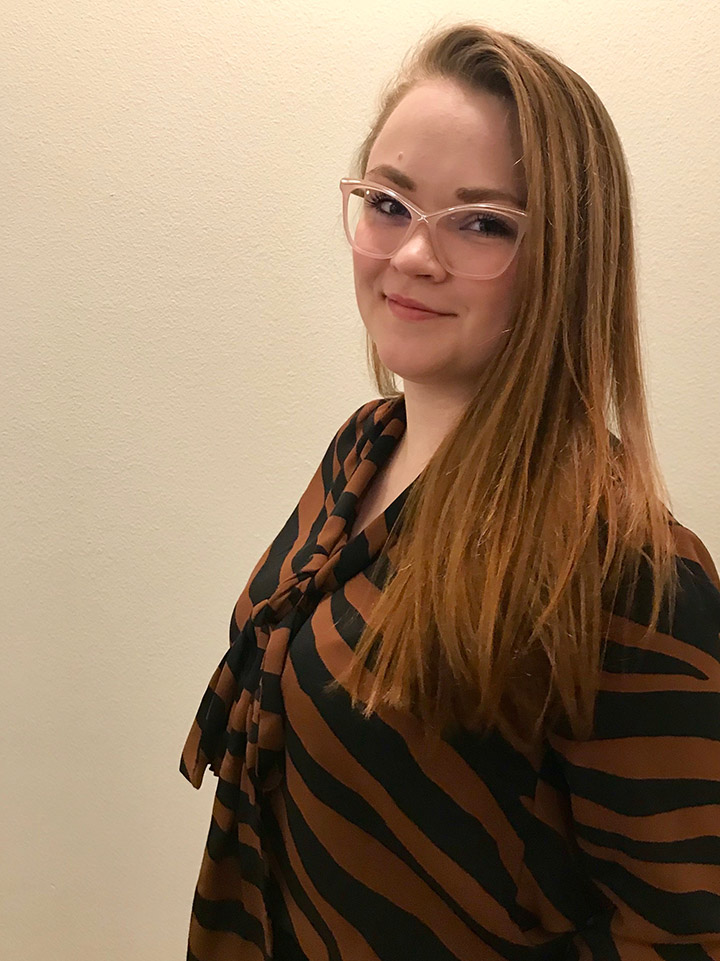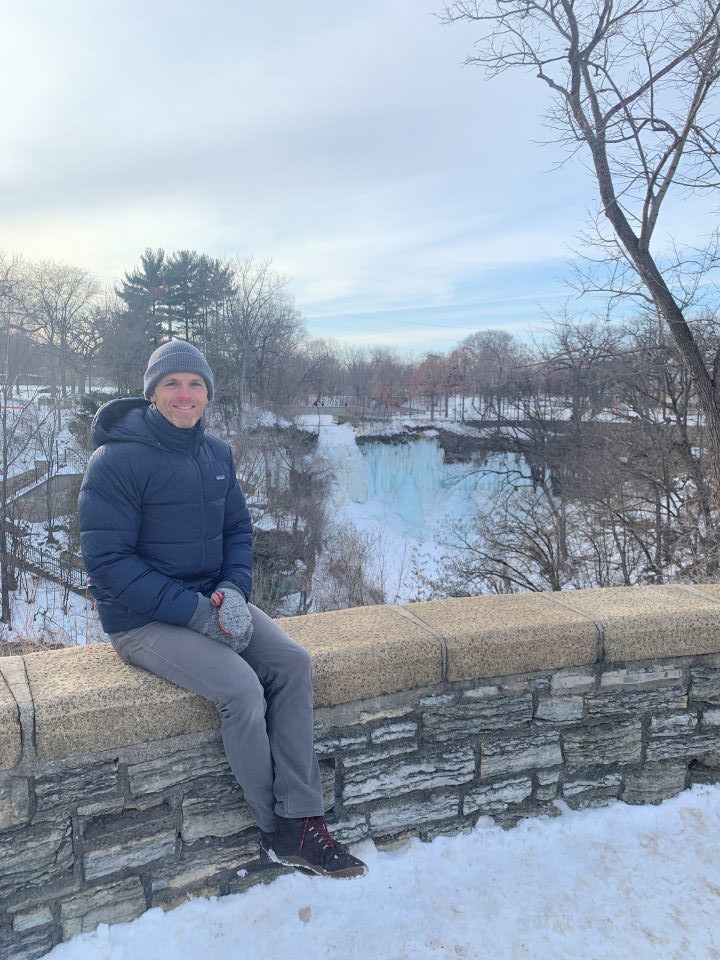
Fresh Energy’s team of technical experts, attorneys, and advocates is working every day to speed the transition to a clean energy economy—and we’ve been doing so for over 30 years. A key aspect of that work occurs via our Clean Electricity team, who are amping (pun!) up a zero-carbon electric grid through effective, innovative, and data-driven policy solutions. Allen, Isabel, Rachel, and Mike, our Clean Electricity program stars, sat down to tell us a little bit more about themselves and the work they lead at Fresh Energy. Let’s get to know the team!
Different stories, one goal
The Clean Electricity team, comprised of Executive Lead, Policy and Programs Allen Gleckner, Director, Clean Electricity Isabel Ricker, Senior Policy Associate Rachel Wiedewitsch, and Senior Manager, Wholesale Electric Grid Transition Mike Schowalter, is decarbonizing the electricity sector serving Minnesota by expanding wind, solar, storage, and demand flexibility, and leading efforts to build the grid of the future. Working in tandem with partner organizations, utilities, decision makers, and the public, the team says that, although they’re aligned on a clear mission, they each have a unique story about how they came to their roles in climate and clean energy advocacy.
Meet Allen Gleckner, executive lead, policy and programs

“In high school, we had a class with the Humphrey School of Public Affairs at the University of Minnesota,” Allen Gleckner says. “I’d been interested in social issues, and politics pretty generally.” He points out, “When I really learned more about climate change in that class, it struck me that without a livable climate, progress on anything else wasn’t really possible long term.” From there, Allen says he had some college classes that piqued more of an interest in energy as a climate solution, leading him to gravitate toward a career advancing clean energy solutions. “Ultimately, I ended up going to law school and then landed at Fresh Energy in 2014—a pivotal year for clean energy and climate advocacy in Minnesota.”
Meet Isabel Ricker, director, clean electricity

Isabel Ricker says that her interest in and knowledge of climate and clean energy is a family affair. “My parents both worked in energy efficiency and affordable housing, so I became very familiar with electricity from a young age.” Reflecting on her childhood on the east coast, Isabel shares, “I remember that, in Pennsylvania, electricity was deregulated in the late ‘90s, and I have memories of my parents shopping around for electricity at county fairs. It turned me on to the clean energy and climate space in a different way than most people probably get. Both my parents are also building performance nerds—so there were lots of home energy efficiency projects growing up.”
Isabel studied sustainable development in college and worked in environmental conservation for a time. “I quickly learned,” she says, “that I was more drawn to working in renewables and energy policy. It’s an optimistic field—it has a different energy that I like, being able to work for something.”
Meet Rachel Wiedewitsch, senior policy associate

Rachel Wiedewitsch grew up on a small organic hobby farm and first became interested in renewable energy as a means of environmental stewardship and improving the health of the general population. “I grew up in a family greatly impacted by cancer, and when that happens you look for a lot of ways to better your environment and limit pollutants, hence the organic, grow-it-yourself mentality,” says Rachel. “I wanted to make the most impact I could, so upon doing some research, I noticed there’s a lot of opportunity for reducing carbon pollution in our power system and that started my journey. As we move into the future, our lives are increasingly run on electricity and it’s important we generate that electricity in a cleaner way.”
After receiving her bachelor’s degree in energy and sustainability policy and her master’s degree in energy regulation and law, Rachel dove into rate issues at the Iowa Utilities Board, reviewing large renewable energy projects for advanced rate making. She then brought her expertise to Fresh Energy, where she focuses on energy policy at the Minnesota Public Utilities Commission.
“Our renewable energy systems have advanced dramatically in the last decade, and I’m passionate about reshaping our energy future so that we can better take care of our communities and the planet,” says Rachel.
Meet Mike Schowalter, senior manager, wholesale electric grid transition

Mike Schowalter still remembers the day his oldest sister came home from college and announced: “We need to recycle.” “My sister was partly through her first semester of college in Colorado,” Mike says. He recounts the memory as a defining moment in his own journey to the clean energy and climate spaces. “We lived near a national park at the time, and I spent a lot of time outdoors. From early on, I’ve had a natural affinity for and deep connection with the environment and natural world.”
As that natural affinity developed into a career, Mike says he was initially focused on equally important issues like land use and water quality, but eventually he began to see everything from a climate-focused umbrella view too. “I was very interested in the human impact side of things. I had lots of international experience and was sure I was going to live and work abroad. But I didn’t feel like I had any ownership of problems abroad. I felt like, if I wanted to make the world a better place, I needed to go home. I needed to help the U.S. both catch up to other places around the world and lead the way, lead by example. So, energy was kind of a natural area for me to gravitate toward over time.”
A clear North Star
Despite their different backgrounds and stories about how they came to Fresh Energy, the Clean Electricity team says they’re all aligned on their ultimate goal. “If we don’t decarbonize the grid, and don’t have that nervous system to bring renewable energy from where it’s made to where it needs to go, that is a critical gap,” says Mike. Allen notes, “Our mission for our team is clear: We want all the electricity serving our state to be carbon-free. We’re all covering different bases but shooting in the same direction. We’re lucky to have that clear, guiding North Star.”
Fresh Energy has been a driving force behind the clean energy transition for over 30 years, using data, science, and expert knowledge of what is possible and what is needed to shape and drive bold policy solutions that achieve equitable, carbon-neutral economies. The work that our Clean Electricity team engages in is crucial to our success—helping expand wind, solar, and storage, and other innovative carbon-free solutions, that build the grid of the future.
“We’re doing two big-picture things,” Isabel says. “We’re both trying to accelerate as much as we can the adoption and deployment of clean energy technologies we already have, since they will be the backbone of the carbon-free grid—wind, solar and storage will serve the vast majority of our energy needs going forward. We’re also working on the flip side of the market, making sure customer demand matches up with when renewables are producing. This is key to getting us to carbon-free,” Isabel says. “That piece of the pie—encouraging better balance of demand with supply—is increasingly important to our work.”
Allen adds, “We work a lot with other Fresh Energy teams to make sure that demand, for example on the transportation and buildings sides, has technologies that are optimally integrated into the system so demand matches renewable supply—so that more and more customers can take advantage of those technologies.
But none of this can happen without public support and encouragement, and the Clean Electricity team credits public will and engagement with helping drive the transition forward. Whatever clean energy priority the Clean Electricity team is working on, all four of the team agree: They are a team of independent, evidence-based, technical experts driven by science. “As new information comes out, we adjust as needed,” Isabel says. “Sometimes that makes us way more wonky than others,” she adds, “but we’re that way for a reason.”
“Our credibility is largely based on the fact that we form our positions and advocacy around data and the best available evidence,” Allen states. Weaving these together into a compelling presentation on why we need to act now to meet this climate emergency moment is a Fresh Energy priority—one central to the work of each of our teams as we continue to welcome Minnesotans and other folks into Fresh Energy’s community.
Check out our short video to learn how meaningful, clean energy policies can move the needle on climate change. Stay in the loop on clean energy and climate issues impacting Minnesota and the Midwest. Sign up for our monthly e-newsletter, Powering Progress, to get the latest from Fresh Energy about energy and climate policy, upcoming events, and ways to take action.
If you’re a social media user, you can plug in with Fresh Energy on Twitter, Facebook, Instagram, and LinkedIn. You can also tune in to Decarbonize: The Clean Energy Podcast on your favorite podcasting app and get the latest and greatest Fresh Energy news on our blog.

